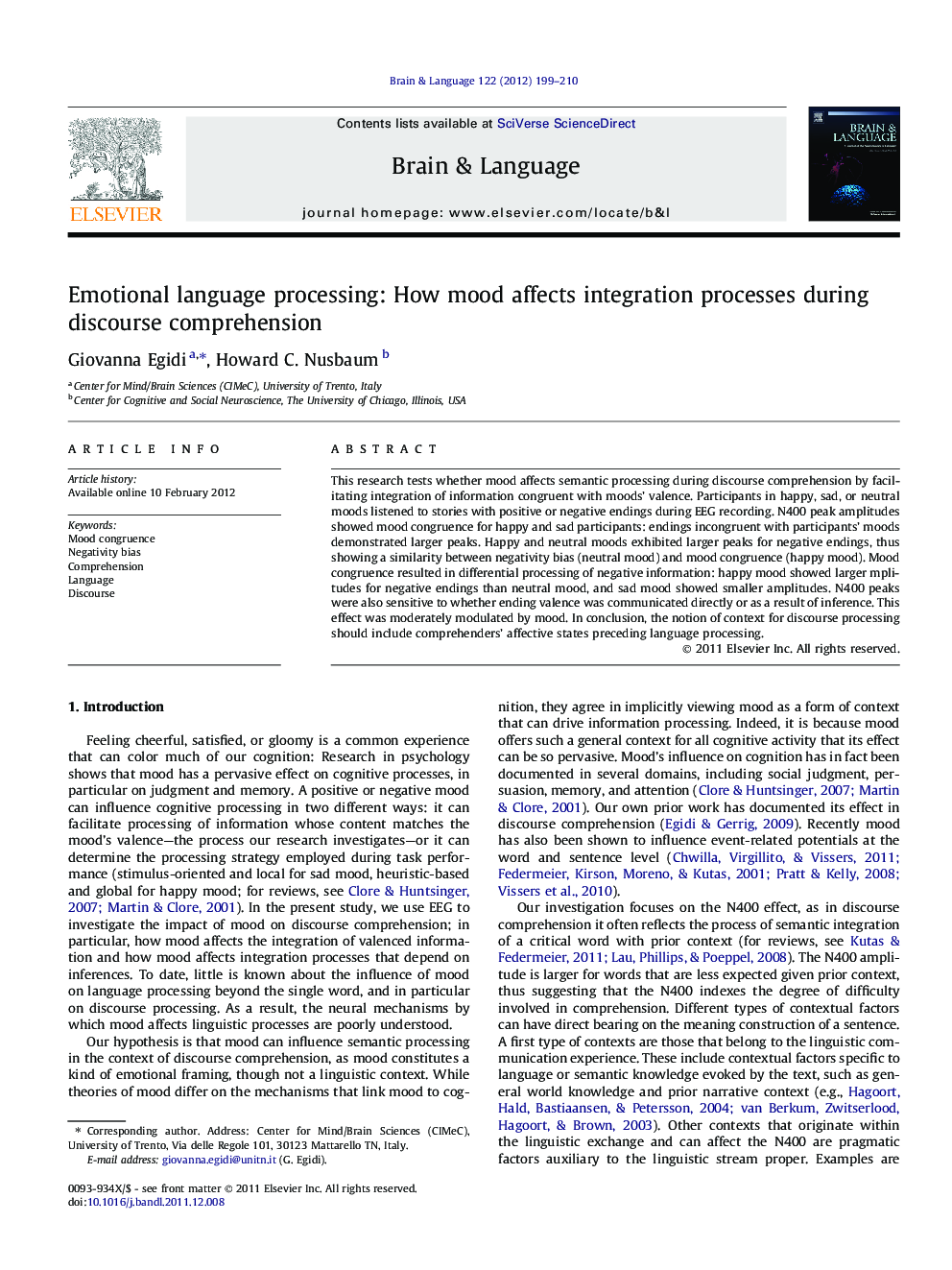| کد مقاله | کد نشریه | سال انتشار | مقاله انگلیسی | نسخه تمام متن |
|---|---|---|---|---|
| 925420 | 921490 | 2012 | 12 صفحه PDF | دانلود رایگان |

This research tests whether mood affects semantic processing during discourse comprehension by facilitating integration of information congruent with moods’ valence. Participants in happy, sad, or neutral moods listened to stories with positive or negative endings during EEG recording. N400 peak amplitudes showed mood congruence for happy and sad participants: endings incongruent with participants’ moods demonstrated larger peaks. Happy and neutral moods exhibited larger peaks for negative endings, thus showing a similarity between negativity bias (neutral mood) and mood congruence (happy mood). Mood congruence resulted in differential processing of negative information: happy mood showed larger amplitudes for negative endings than neutral mood, and sad mood showed smaller amplitudes. N400 peaks were also sensitive to whether ending valence was communicated directly or as a result of inference. This effect was moderately modulated by mood. In conclusion, the notion of context for discourse processing should include comprehenders’ affective states preceding language processing.
► We study the effects of happy, sad, and neutral mood on discourse comprehension.
► We examine N400 peak amplitudes and latencies to positive and negative story endings.
► We find larger amplitudes for endings mismatching happy and sad moods.
► We find larger amplitudes for negative endings for happy and neutral moods.
► Mood functions as context and affects semantic processing in discourse integration.
Journal: Brain and Language - Volume 122, Issue 3, September 2012, Pages 199–210